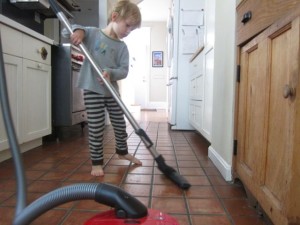My five-year-old daughter flipped out this morning when she learned that she needed to get a blood test. While I’m not a big fan of tearful wailing at 8:00 AM, I have to admit that flipping out is a perfectly reasonable response to the thought of having a complete stranger stick a needle in your arm. Especially when you’re just five years old.
We’ve been through our fair share of flip-outs, and they usually end with some variation of either snuggles or shouts (from both of us), but this time I tried something new. Perhaps it’s because I actually got eight hours of sleep last night, or perhaps it’s because I’m working on a new book about teaching mindfulness to children, but I actually had an idea.
Earlier this morning, my daughter has asked me if I had meditated after I woke up, and it just so happens that I had, so I knew meditation was on her mind. As she sat at the dining room table, sobbing into her cereal, I told her that one reason I meditate is so I can practice choosing my thoughts, so I can get better at keeping the ones I want and getting ride of the ones I don’t.
This may seem like a pretty basic idea, but it was absolutely life-changing for me—a clinical social worker who was trained to believe that our thoughts are deeply meaningful and must be examined in great detail—to learn that thoughts are just thoughts. Perhaps they are random firings of neurons, monkeys flinging shit around our brain, or divine insights; regardless, no one knows where they come from, what their purpose is, or how to control them. They’re only as important as we let them be and we certainly don’t have to let them define our experience. We are not our thoughts, and we don’t have to assign them any more or less meaning than we want to. This is a fundamental concept in mindfulness, which is all about paying attention in a conscious, curious way, which often involves letting go of judgmental or unskillful thoughts.
For better or for worse, I decided it was time to introduce this idea to my daughter. It seemed to spark a little interest in her, but she wasn’t sure if knew how to get rid of the bad or sad or mad thoughts. We talked about sending them away, perhaps in a car that would drive them down the road, or a boat that would float away on a river. She seemed to like this idea, so she hopped out of her seat and got out my meditation cushion to give it a shot. (Meanwhile, my 4 year old announced that she was going to eat the bad thoughts. I wasn’t sure if that was such a good idea until my older daughter decided she had to pee, at which point my husband chimed in that perhaps the girls could, in fact, eat their bad thoughts and then flush them down the toilet. Not exactly the metaphor I was going for, but I have to admit it works.)
I’d love to tell you that my clever plan to teach my daughter to choose her thoughts worked flawlessly, but let’s be honest here, people. She’s just a kid with a still-developing brain and the coping skills of a five-year-old. I’m 36 with a well-developed brain (or so I like to think) and moderately decent coping skills, and I still struggle to recognize and let go of my unskillful or unhelpful thoughts. She still had a rough morning in anticipation of the blood draw.
The point of my conversation with her about choosing thoughts wasn’t to solve the immediate problem of her desire not to have a needle stuck in her arm. I knew that was going to have to happen, and I knew that no matter what, she was going to be seriously pissed and scared about it. (Which is why I asked my husband to take her to the lab; knowing what you can manage what you should outsource is another important skill of mindful parenting.) Rather, my goal this morning was to introduce the idea that our thoughts don’t have to define our reality. I was just trying to plant some seeds of mindful thinking in my daughter’s consciousness, with the hope that at some point they will eventually sprout and grow.
Of course, the other point was to get her to stop crying long enough so I could get some coffee down my gullet, which I actually was able to do. As I always say: in the absence of mindfulness, caffeine and chocolate.





